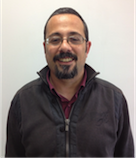HealthManagement, Volume 14 - Issue 3, 2014
Authors

Dr. Marta Serallonga
Radiologist
Clinical Governance Department

Dr Núria Serra
Medical Management Director

Joaquin Ruíz
Technical Engineer
Technical Department

Manel Moreno
Technical Engineer
Processes Consultant
IDI – Institut de Diagnòstic per la Imatge
Barcelona, Spain
Key Points
• Healthcare policy
• Quality in imaging departments
• Team working
• Technological evaluation
• Standards and audits
• Continuous improvement
Introduction
This article discusses the ‘Integral Quality Plan’ (IQP) created and employed at IDI (Institut de Diagnostic per la Imatge).
IDI is a public organisation and part of CatSalut, the Catalan regulatory body of the National Health System. IDI is responsible for the management, administration and performance of computed tomography (CT), magnetic resonance (MR), interventional radiology and nuclear medicine in the main teaching hospitals of the Catalan public health system, including Vall Hebron, Bellvitge, Germans Trias i Pujol in Barcelona and Dr Josep Trueta in Girona.
The main purpose of the IQP is to establish a systematic approach to quality within IDI, in order to maintain and improve the highest standards of patient care.
To implement the IQP, a Quality Commission (QC) has been created. The QC is moderated by the Medical Director and consists of three units: clinical governance, the processes consultant and the technical department.
This article details the roles and interaction between the relevant parties, and how this has positively impacted the day-to-day running of IDI and contributed to the ultimate goal of continuous professional development, optimal patient care and high standards of excellence in imaging.
Historical Context
Since its creation in 1991, the challenge of quality and clinical governance has been a top priority at IDI, and has an important role within the processes map (see Figure 1). In this processes map quality has a strategic place with a direct relationship to operative processes. In the years prior to the IQP there were several significant developments aimed at improving quality at IDI. These included:
• A Quality Policy in the strategy plan was established in 2007. In this context IDI’s mission, vision and the Quality Handbook were defined.
• In 2007 the Management Team set out its commitment to Quality in a policy document (QPD, see Figure 2) where objectives were defined. The QPD covers aspects relating to the working practices of all staff at IDI. All staff members adhere to this declaration.
• In 2007 five IDI units obtained the International Organization for Standardization (ISO) 9001: Quality Management Systems certification from AENOR (Asociacion Espanola de Normalizacion y Certificacion), followed by two additional IDI units in 2010.
• In 2012 the IQP was defined and the Quality Commission created.
• In 2012 a progressive integration process was started in the Radiology and Nuclear Medicine ICS (Institut Catala de la Salut) departments as a strategic bilateral initiative. The aim was to obtain an integral and unique model of imaging.
• By 2013 twelve out of thirteen units had obtained or renewed certification (see Figure 3). IDI staff performed these certification procedures.
Reason for the IQP
ISO 9001 is an excellent tool to manage processes, working groups and the continuous professional development of professionals. However it is more appropriate for manufacturing purposes than clinical activities.
For this reason, the IQP was introduced in 2013 in order to create internal IDI standards and to adapt to the recommendations of world-renowned radiological and nuclear medicine societies.
The objectives of the IQP were to reduce errors and clinical variability in the different departments. In addition there is a focus on continuous professional development and processes improvement, with the final aim of improving patient care.
To implement the IQP, we have created a Quality Committee made up of a Management Team and a Quality Commission. The Quality Commission consists of: the medical director (MD), clinical governance, the processes consultant and the technical department. These meet monthly and produce feedback for the Quality Committee. The Quality Committee reviews this feedback in a Quarterly Meeting (see Figure 4).
Table 1 includes the task list of actions taken by the Quality Commission since its creation.
Figure 1. IDI Processes Map
Role of the Medical Director
The Medical Director is a member of IDI’s management team and cooperates with the CEO in defining and executing the functional plans of the organisation. Medical Management also oversees and coordinates the operations and productivity of all IDI units. In addition, the Medical Director acts as the leader of the QC, establishing direction and priorities, moderating meetings and giving executive support to the remaining members. In this way the Medical Director functions as a nexus between the QC and the Management Team. The Medical Director transmits the strategic vision, periodically informing the management team about progress, results and new upcoming projects.
The Medical Director acts as a moderator and leader to the QC and also directly participates in some of the working groups.
Role of Clinical Governance
Clinical Governance is led by a radiologist. Taking the ISO system as an initial reference, the aim of clinical governance is to introduce a dynamic of continuous professional development in order to detect clinical matters and to identify the people they concern.
Clinical Governance is responsible for the creation of several working teams across IDI. These working groups are continuous; when one group’s function has ended a new working group is formed. These groups include medical and non-medical staff at every level, and they connect both face to face and in online environments. This collaboration allows for knowledge and experience to be shared, and establishes the quality standards for each department.
The
communication between individual members of each working group is based on a
progressive, non-critical approach. Our ethos is that collaboration is
necessary to deal with all the issues that concern radiology and nuclear
medicine in order to obtain the corresponding guidelines.
Figure 2.
Quality Policy Document . The Quality Policy Document was created in the strategic plan in 2007.
Figure 3.
Territory Map of IDI units in Catalonia. Q: Accredited unit.
Clinical Governance Priority Actions:
• The IQP is communicated to all staff through presentations and also through notifications sent across the web.
• The dynamics of these actions are based on ISO 9001. In order to respond quickly to minor disconformities detected during the annual audits, we create working groups that work with the improvement actions.
• Through this dynamic network issues that are detected by one working group then become the focus for future working groups.
For Each Working Group:
• The group is formed by volunteer members.
• Time is scheduled for actions.
• Collaborative documents are shared online.
• The responsibilities for creating the meeting agenda, taking the meeting minutes and assigning tasks are shared amongst the group members.
• A consensus is achieved by collaboration with the sharing of experiences and knowledge within the group.
Role of the Technical Department
The Technical Department, which is led by a technical engineer, supervises and ensures that our facilities and equipment fulfil local regulations.
The Technical Department works closely with healthcare providers and qualified engineers so as to guarantee that the equipment has an up time of 95%.
Preventive maintenance protocols are scheduled periodically, following manufacturers’ recommendations. Any technical or clinical-related issues or new applications are prioritised, and these are then solved in the shortest possible time.
Technical Department Priority Actions:
• All IDI units are maintained, correcting incidents detected during inspection in accordance with Spanish law.
• Resource optimisation and cost reduction opportunities are identified.
• New equipment is researched and acquired through public tender.
• Technical design, pre-installation and installation of equipment across IDI is performed.
• Quality control of equipment and appliances is executed to ISO system standards in accordance with Spanish law and manufacturers’ specifications.
Furthermore, a common online register for all IDI centres has been launched, where warnings, fault type and description, resolution, budgets, hour and shift work are recorded. This register enables quick and accurate data extraction, and with this in place any issues can be promptly resolved.
Role of the Processes Consultant
The processes consultant is also a technical engineer, who implements the management of the quality system and its procedures for ongoing improvement.
Responsibilities include maintaining and updating documentation, collecting client (both patients’ and clinicians’) satisfaction data, conducting internal audits and processes management.
Furthermore, the processes consultant supports the management team with data analysis and puts corrective and improvement measures into practice.
Quality Processes Priority Actions:
• Internal training is taken in ISO System requisites.
• Information is recorded and stored with respect to the Quality Management System.
• Support is made for each process including definition, follow-up and an indicators analysis.
• A continuous improvement system is implemented through disconformities and corrective action.
• Internal audits are coordinated.
• Client satisfaction feedback is monitored, analysed and reported.
• Support is given for defining strategic and operative processes as well as annual objectives.
Tools and Methods Employed in Managing the System:
• All actions at management and operational levels are filed in IDI’s specific computerised recording system.
• The objectives of the organisation and monitoring of indicators are established and controlled by online applications.
• Management of nonconformities and corrective and preventive actions is computerised.
• Internal and external audits are conducted on a regular basis, both at operational and management levels (see Figure 1: Certificate AENOR ISO 9001:2008).
Conclusion
The creation and execution of the IQP has resulted in a dynamic network, which covers all parts of the organisation. This dynamic network has helped to improve many areas in the day-to-day running of IDI.
This arrangement has been instrumental in solving quality issues within the Radiology and Nuclear Medicine unit. Moreover, it has led to an increase in the safety of staff working in the unit along with a rise in the quality of patient care. Other effects of the IQP have been to improve the relationship with other clinicians and to clarify communications with service providers. It has enabled a systematic method of working with a daily checklist of technical issues that has helped to guarantee optimum performance of facilities and equipment. In addition, processes have been standardised and there is better control of the flow of information. Documentation support has been agreed upon, obtained and updated.
The Quality Commission helps to administer all activities, and at the core of these actions is the delegation of responsibilities, which are shared amongst staff from all departments.
Overall
collaborative group work has made an invaluable contribution to our ultimate
goals of continuous improvement, optimal patient care and high standards in
imaging.
Table 1.
Quality Commission Task List

